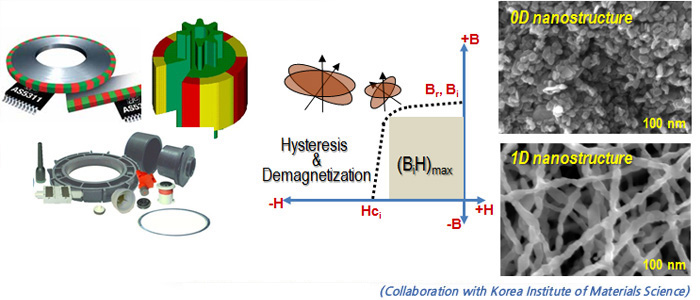Electromagnetics Materials
Permanent magnet
A permanent magnet is an object made from a material that is magnetized and creates its own persistent magnetic field. Permanent magnets are made from "hard" ferromagnetic materials such as alnico and ferrite that are subjected to special processing in a powerful magnetic field during manufacture, to align their internal microcrystalline structure, making them very hard to demagnetize. To demagnetize a saturated magnet, a certain magnetic field must be applied, and this threshold depends on coercivity of the respective material. BaFe12O19 is the one of the ferrite group with significant material qualities such as large magnetization, large magnetocrystalline anisotropy, and high coercivity. Since the magnetic properties of BaFe12O19 depend on their particle size, shape and homogeneity, various methods have been used to prepare BaFe12O19 nanostructures to improve their magnetic properties. In the study, we present a fabrication method of BaFe12O19 nanoparticles and nanowires using a combined technique of ultrasonic spray pyrolysis and electrospinning with high-temperature heating treatment.

Electromagnetics (EM) wave absorber
Various kinds of electronic devices, including cellular telephones, which utilize electromagnetic (EM) wave in the range of GHz have been applied to the practical life. However, In accordance with these devices using, electromagnetic interference (EMI) can be occurred and cause serious problem such as the false images and mechanical malfunction due to the severe interruption of electronically controlled systems. Researchers are investigated to explore new types of EM wave absorbers have a higher the saturation magnetization and anisotropy field that can meet requirements like light weight and strong absorption in a wide frequency range. It is known that nanowires with high aspect ratio may exhibit the shape effect that can induce strong polarization. In the study, we focus on the absorption properties of magnetic nanowires with high aspect ratio by electrospinning.

